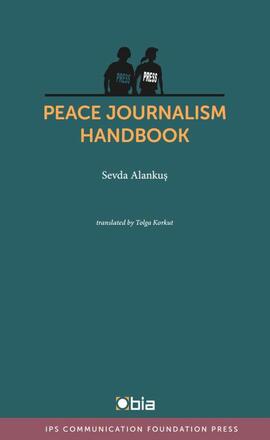
Peace journalism is when editors and reporters make choices – about what to report, and how to report it – that create opportunities for society at large to consider and to value non-violent responses to conflict (Lynch and McGoldrick, 2005:5)
The heart of this handbook explores the nature of Peace Journalism: Why is it needed? What is it? How is it new or different? Moving from the specific application of Peace Journalism in Turkey, the study turns to a more detailed and systematic scrutiny of how to practice Peace Journalism that encompasses the definition of what constitutes news; who and what are the sources to be relied upon; what values undergird and drive the practice; what structures and assumptions are encouraged; how a new language can improve our understanding; what can be done to work within the myriad challenges of active conflict or war; why photographs matter so much and how to improve the practice of photojournalism; and – to close – a review of why we need peace journalism and how you can help it grow.
Sevda Alankuş, the handbook’s author, proposes to go beyond the traditional pattern of the need for journalistic objectivity, basing instead Peace Journalism on careful and systematic scrutiny of how facts undermine or support foundational human rights.
According to this handbook, Peace Journalism stands upon the theory that the free flow of accurate information to the people worldwide is the foundation of an informed citizenry and of fair and just systems of government. It can be interpreted as a challenging alternative to biased or pro-stasis mainstream journalism, as a broader and more balanced platform for myriad perspectives and viewpoints, as a “possibility of another kind of journalism” content and structure, or as an antidote to “negative” news focused on conflict, crime, and celebrity imbroglios.
The concept of Peace Journalism is infused both with feminist theory and rights-based journalism. This book urges to act as an antidote to the dominant rhetoric of a specific time and place by embracing the language of the “Other”. It calls to combat exclusion or underrepresentation replacing the traditional journalist’s mantra of balance with a more specific and located idea of equity.
Tags: Ethics of journalism Access to information Media and gender Human rights War reportingThe content of this article can be used according to the terms of Creative Commons: Attribution-NonCommercial 4.0 International (CC BY-NC 4.0) . To do so use the the wording "this article was originally published on the Resource Centre on Media Freedom in Europe" including a direct active link to the original article page.

